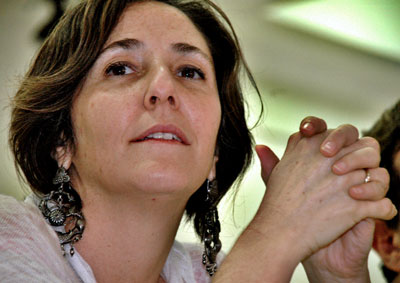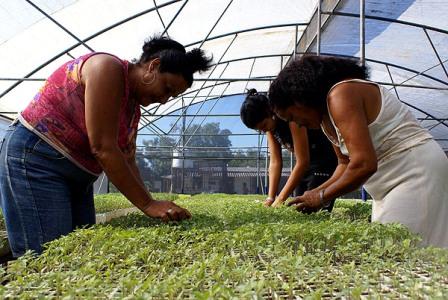April 22, 2010 - The current national emissions-reduction pledges accompanying the Copenhagen Accord will not limit global warming to two degrees Celsius. In fact, they imply a global mean temperature increase of more than three degrees Celsius this century. This is reported by a team of researchers led by Joeri Rogelj and Malte Meinshausen of the Potsdam Institute for Climate Impact Research in the current edition of the journal “Nature”.
“It is amazing how unambitious these pledges are,” the researchers remark in the opinion piece. The Copenhagen Accord has a stated aim of keeping global warming to below two degrees Celsius. However, according to countries’ stated ambitions for reducing emissions, global yearly emissions of greenhouse gases will increase by 10 to 20 percent above current levels and reach amounts equivalent to 47.9 to 53.6 gigatonnes of carbon dioxide (GtCO2-eq) by 2020. This would result in a greater than fifty percent chance that warming will exceed three degrees Celsius by 2100, the authors calculated. To be on track for meeting the “below 2° C” climate target, global emissions of no more than 40 to 44 GtCO2-eq have to be achieved by 2020.
Many countries have indicated that working towards the stronger end of their pledged ranges is conditional on a global agreement that doesn’t currently exist. The less ambitious ends of these targets are thus more likely to reflect the real outcome of the Copenhagen Accord, the authors point out. “In the worst case, we could end up with emissions allowances exceeding the business-as-usual projections,” says Joeri Rogelj.
In their analysis, the researchers take into account so-called loopholes, most notably surplus allowances. If a country reduces its emissions more than its target stated in the Kyoto protocol, it can use these surplus allowances later. “Under the Kyoto Protocol, some countries’ targets were so weak that large amounts of surplus allowances have been and will be generated over the 2008 to 2012 period, even without any environmental policy effort,” the authors state. They estimate that this adds up to 11 GtCO2-eq. “Because anything profitable is likely to be pursued,” the authors assume that countries will increasingly make use of surplus allowances from now until 2020.
The researchers compiled national emissions estimates from the pledges submitted to the Copenhagen Accord and, for countries that didn’t submit targets, from previous announcements. For the remaining countries that have not made any announcements they assumed a business-as-usual growth scenario. They ran these numbers through a coupled carbon cycle climate model, finding that temperatures would even exceed three degrees Celsius warming by 2100. “48 GtCO2 emissions by 2020 is not on track to meet the 2° C goal – it is like racing towards a cliff and hoping to stop just before it,” says Malte Meinshausen, who recently lead-authored an article in “Nature” on the global total emissions budget that remained to respect the 2° C climate target (see related press release).
As of 13 April, 76 countries, accounting for about 80 percent of global emissions, have submitted pledges to limit their emissions of greenhouse gases by 2020. Japan and Norway are the only two developed countries to make pledges in line with the 2° C limit, the researchers report (seewww.climateactiontracker.org). The United States provided a 2020 target of 17 percent below 2005 levels, equivalent to just 3 percent below 1990 levels, while 25 to 40 percent in total would be required for developed countries as a whole. The less ambitious end of China’s target to lower its CO2 emissions per unit of gross domestic product by 40 percent compared to 2005 corresponds to business-as-usual development. The European Union offered a range of 20 to 30 percent cuts. Reducing emissions by 20 percent would lead to smaller annual reductions from now to 2020 than have been accomplished on average over the past 30 years.
The analysis is a collaboration of researchers at PIK, Ecofys (www.ecofys.com) and Climate Analytics (www.climateanalytics.org).
Article: Rogelj, J. et al. (2010). Copenhagen Accord pledges are paltry. Nature 464, 1126–1128, DOI: 10.1038/4641126a







